I recently came across the Shakmat HiPass module and it got me thinking… When I make music with my computer, I always high pass the main mix at 20-30Hz to remove inaudible sub frequencies from the mix and give more energy to the rest of the audible frequencies. Since my modular generates some pretty low frequencies, I figured something like that would be very useful. I did a little research, which led me to designing a simple active high pass filter.
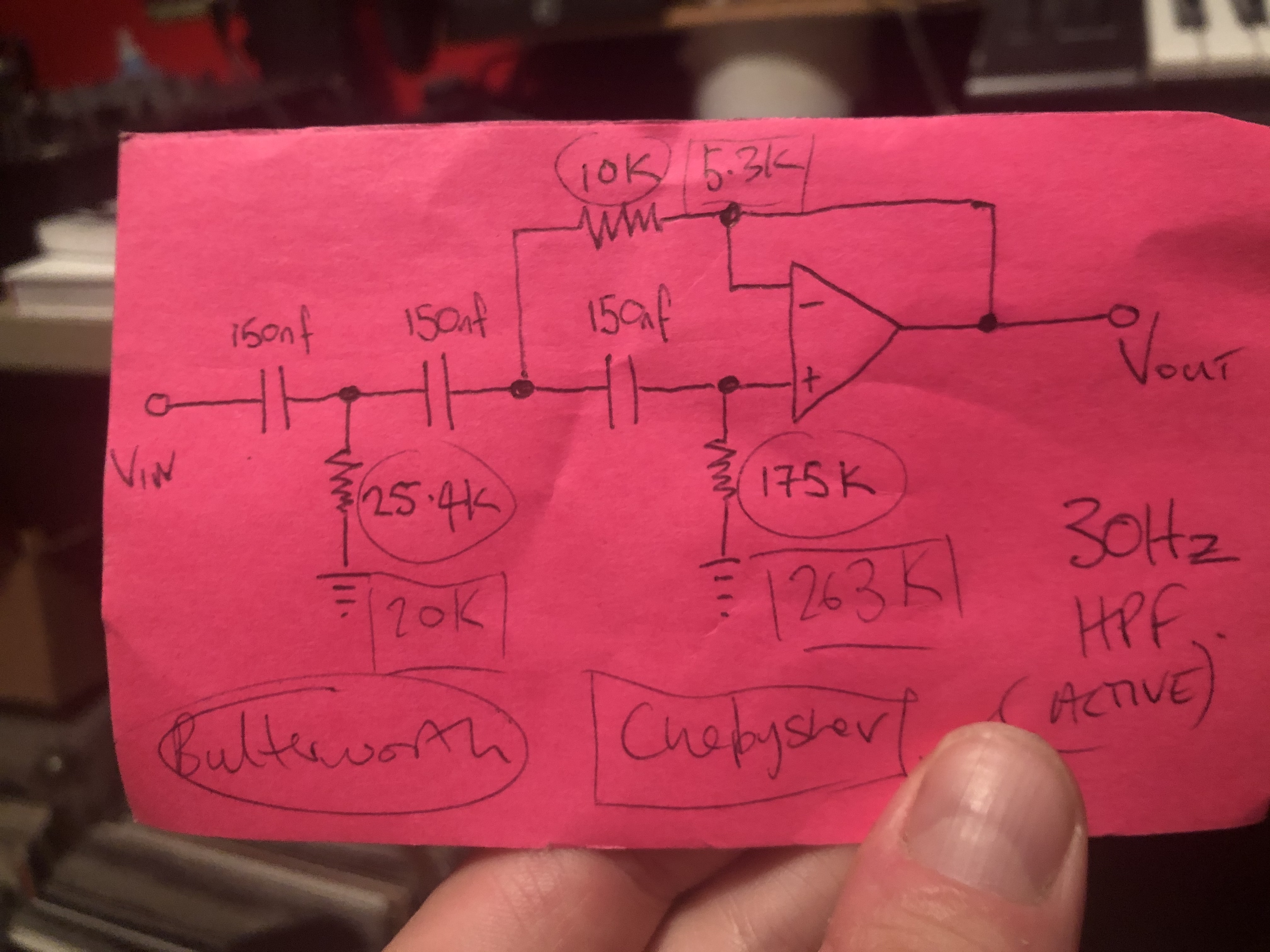
It’s a 3-pole (-18db) Sallen-Key high pass filter, using an op amp buffer to keep the level right. My first design used 150nf capacitors, just because I had a bunch of them in my spares box. I calculated the resistor values using the “Butterworth” and “Chebyshev” algorithms, eventually deciding on Butterworth as, while the Chebyshev method gives a steeper slope, it can also introduce some ripple in the pass band and I obviously don’t want that on my main mix! I initially decided to use a 25Hz cutoff point, but changed my mind and went for 30Hz, like the Shakmat module.
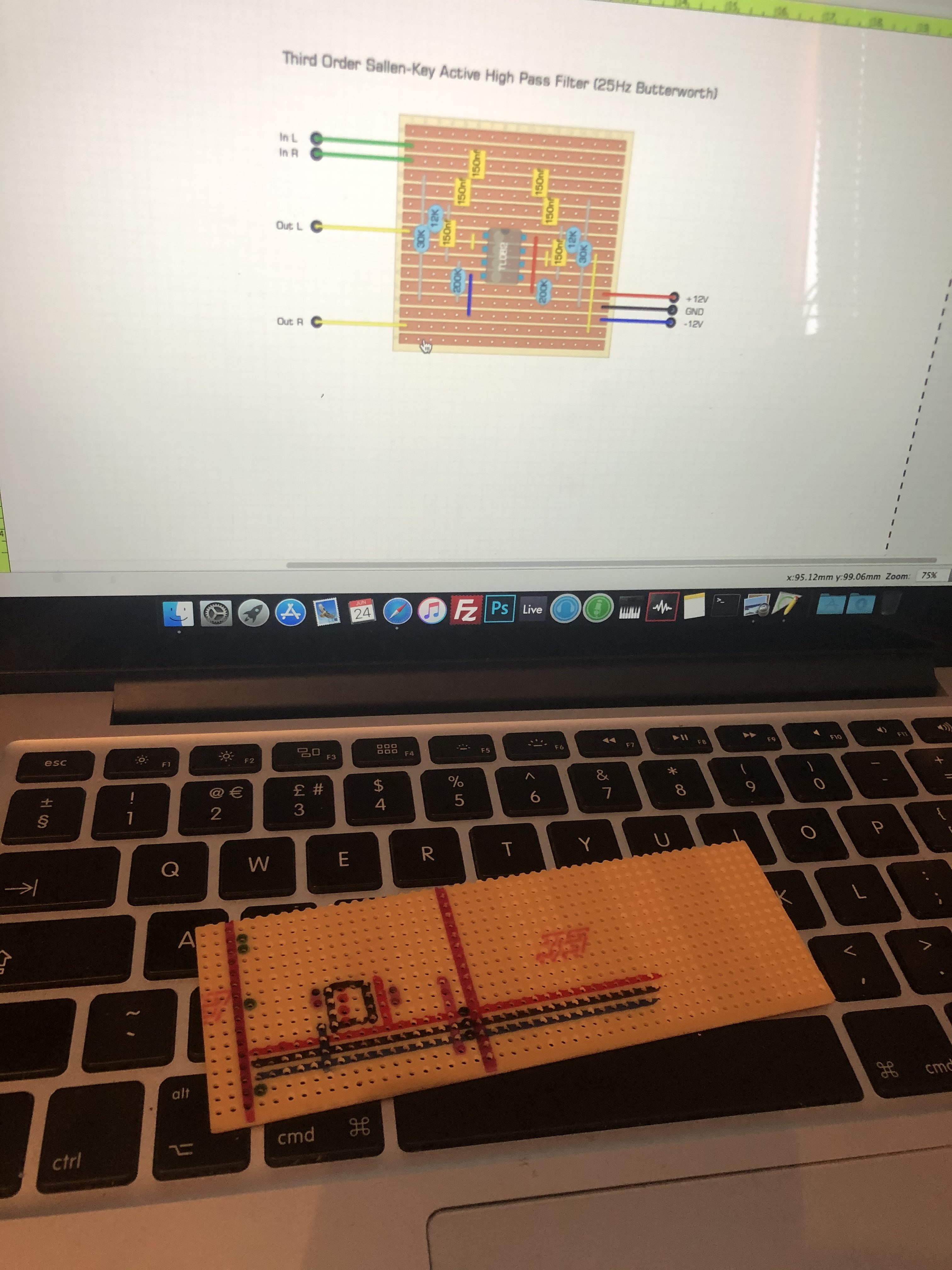
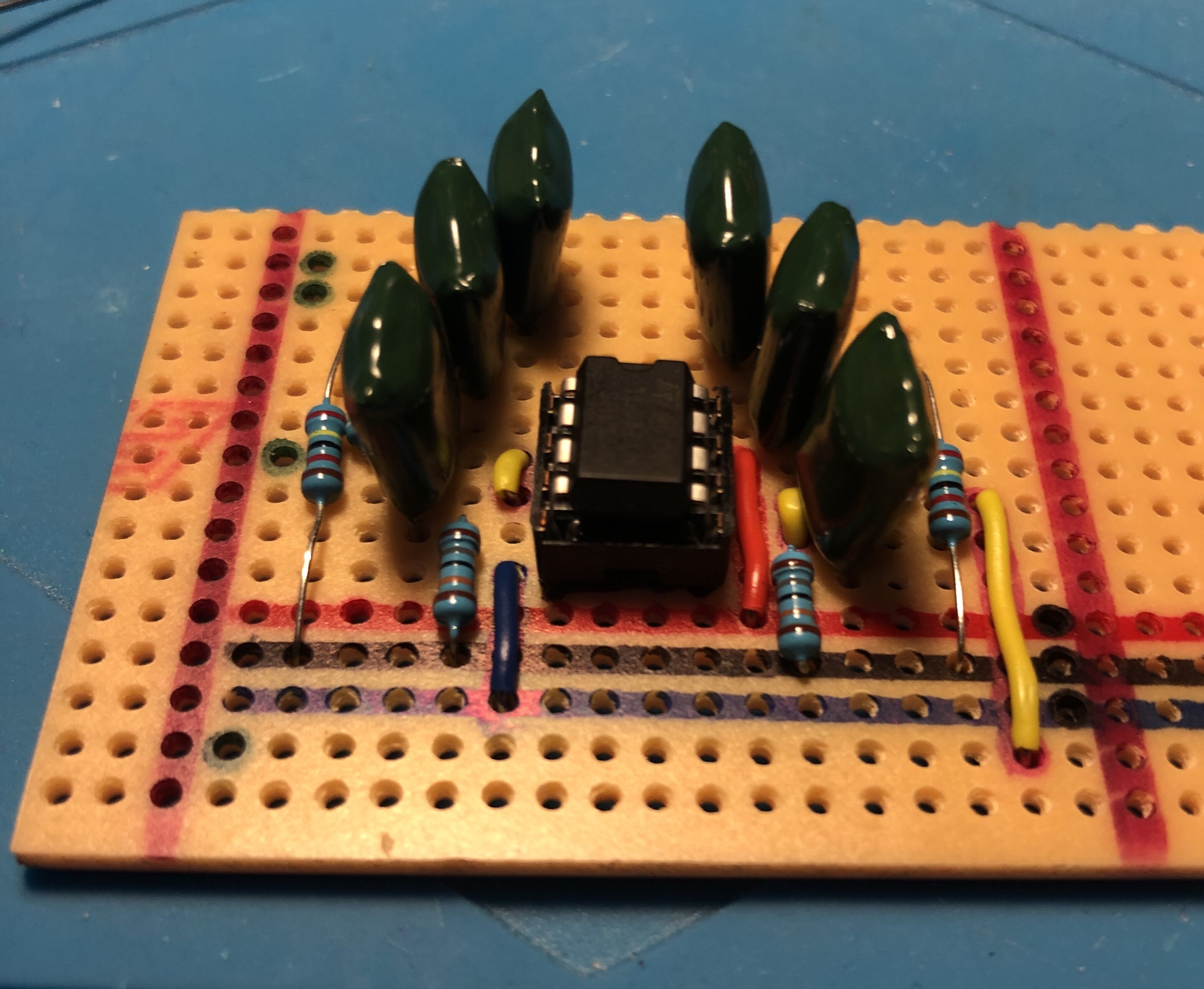
I designed a stripboard layout and made up the circuit.
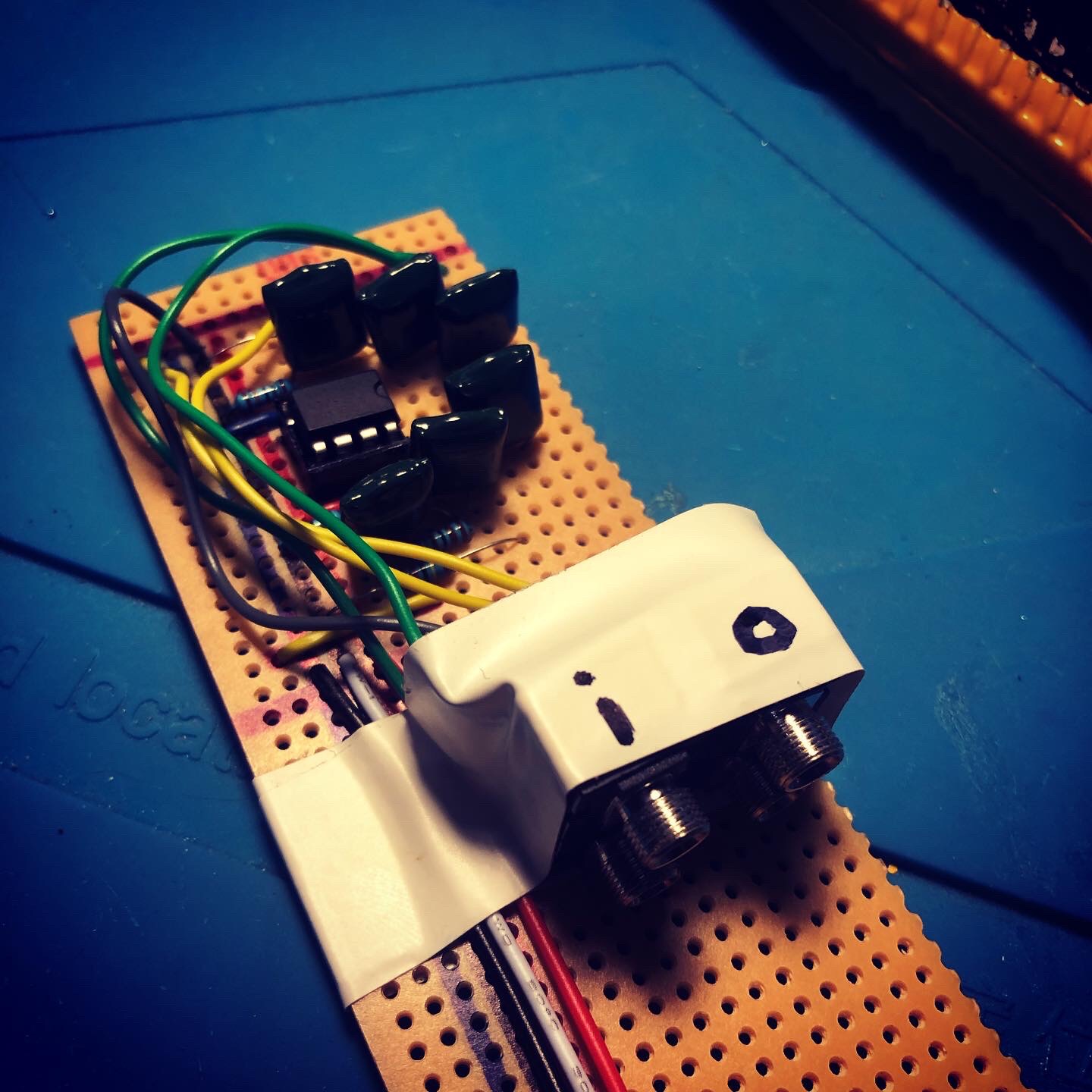
I added some jacks and tested it out. It worked very well, but I wasn’t happy with the cutoff frequency/slope combination – it was biting into audible frequencies a bit too much.
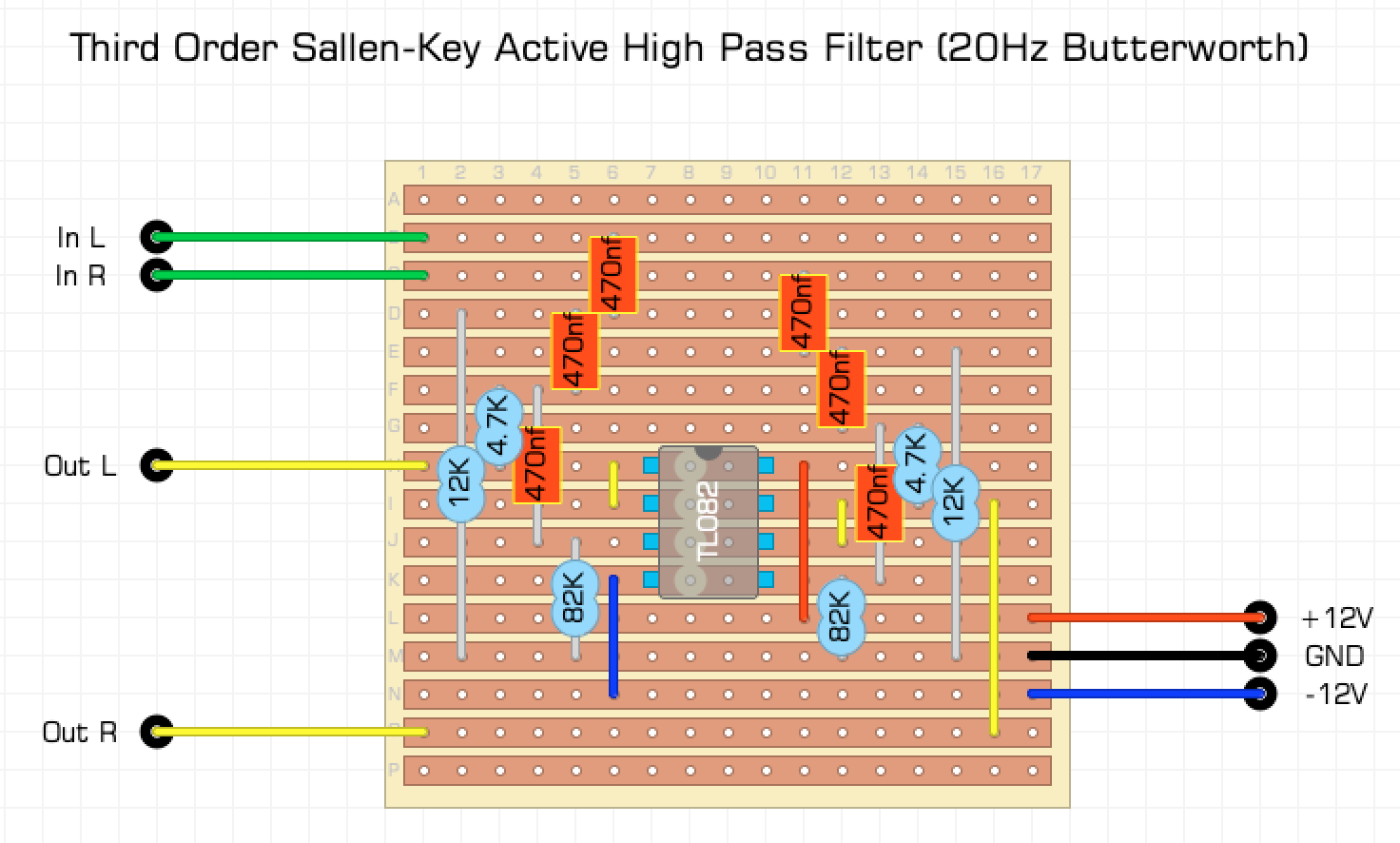
So, I redesigned it, calculating the component values for 20Hz and using better quality capacitors.
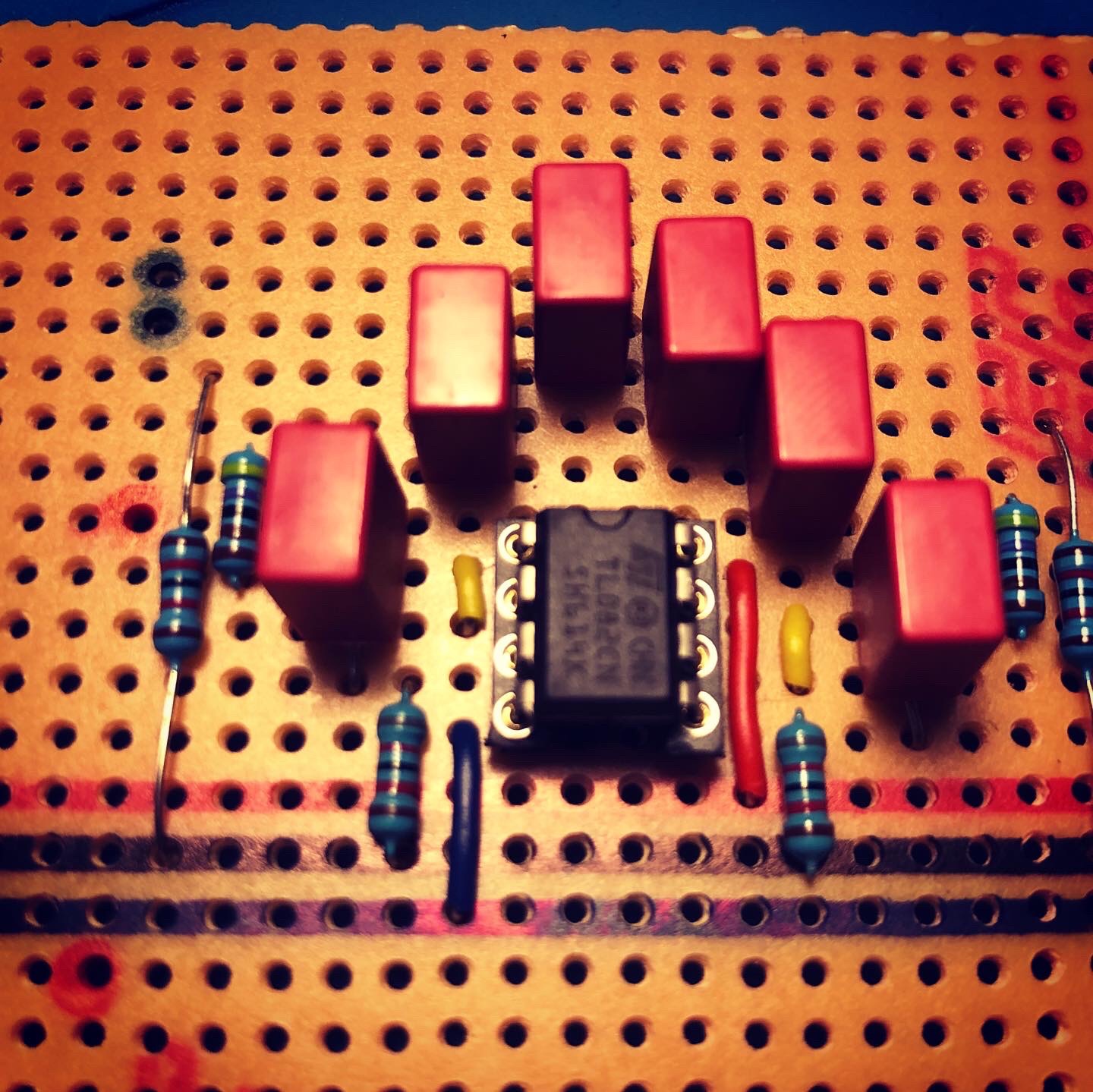
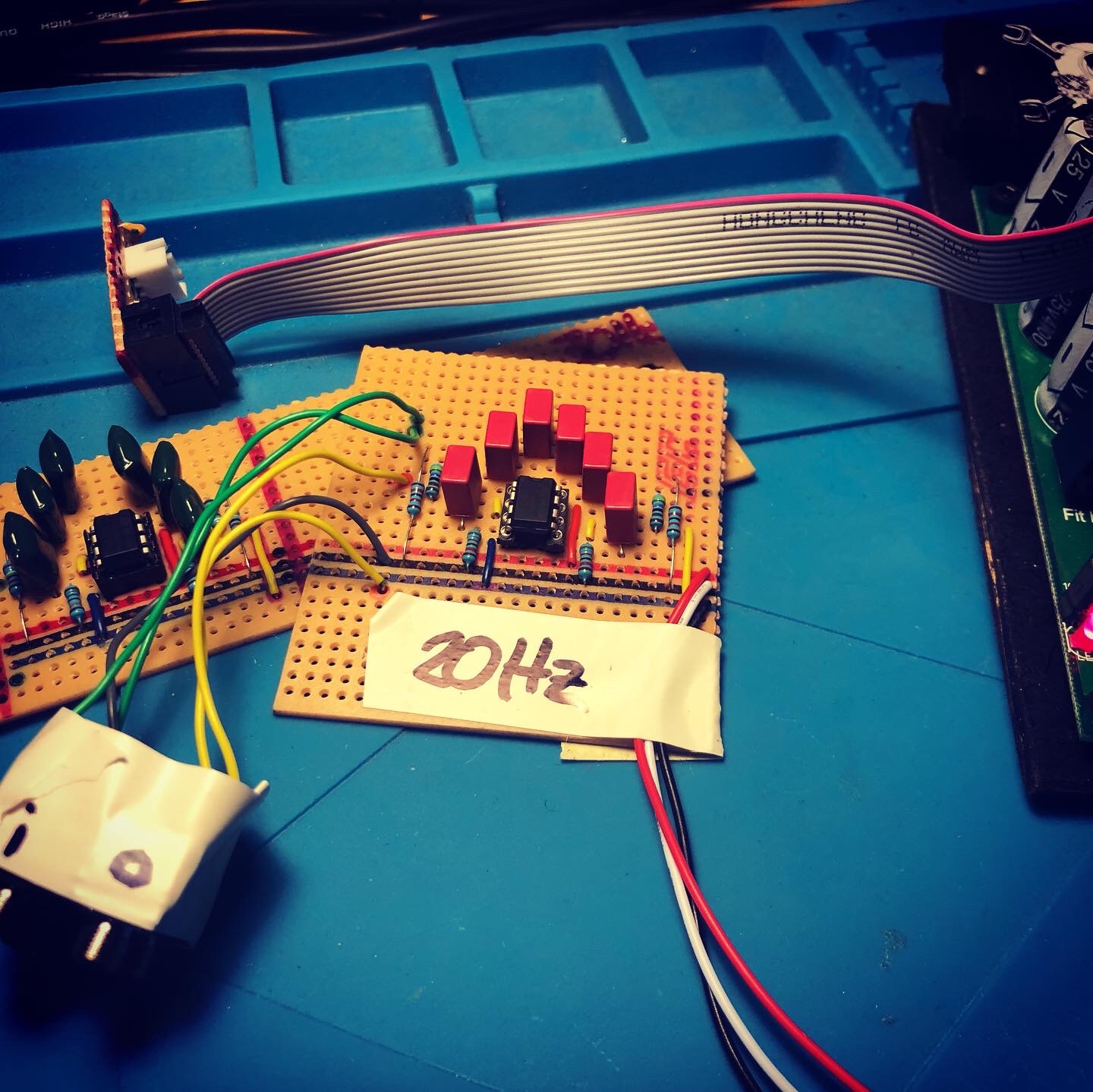
This was much better. A very visible reduction in sub-audible frequencies and it actually made the main mix sound bassier, so I was confident it wasn’t taking too much audible stuff away. In the images below, the important lines are the upper, fainter ones as the brighter lines are being animated in the screenshots.
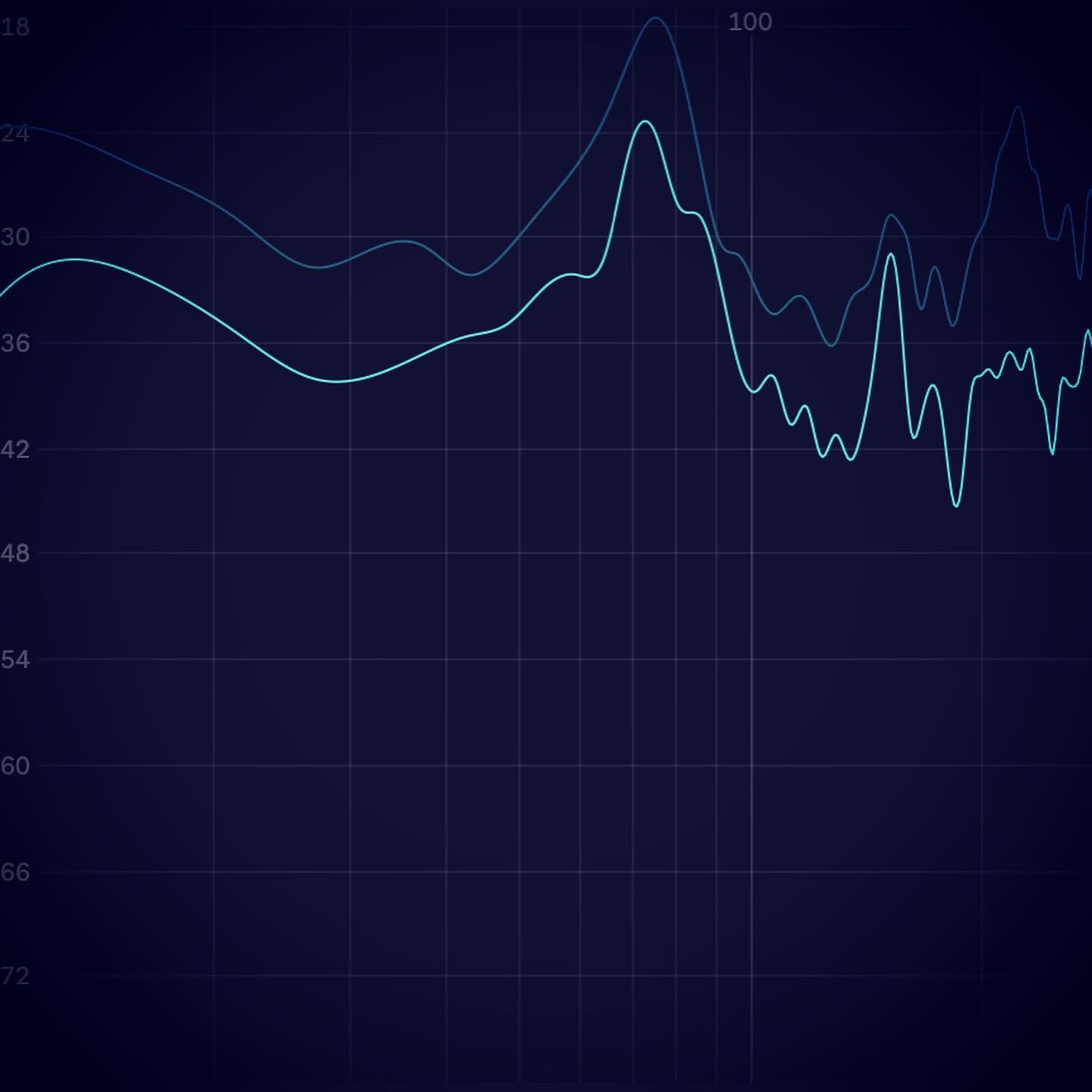
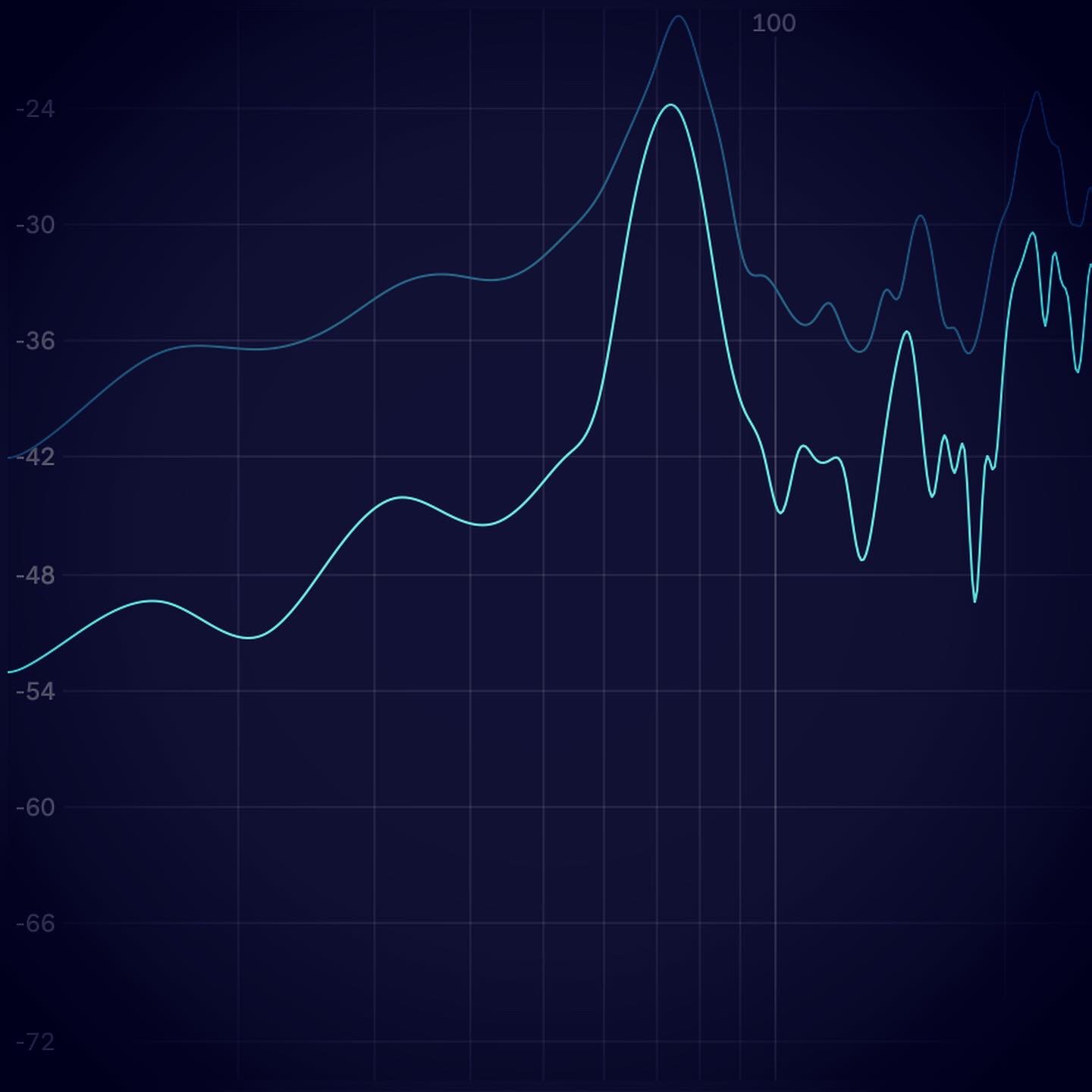
I decided to put both circuits into a module. The earlier 30Hz circuit would still be useful for taming the low end of drums or individual voices and the 20Hz is perfect for the main stereo mix.
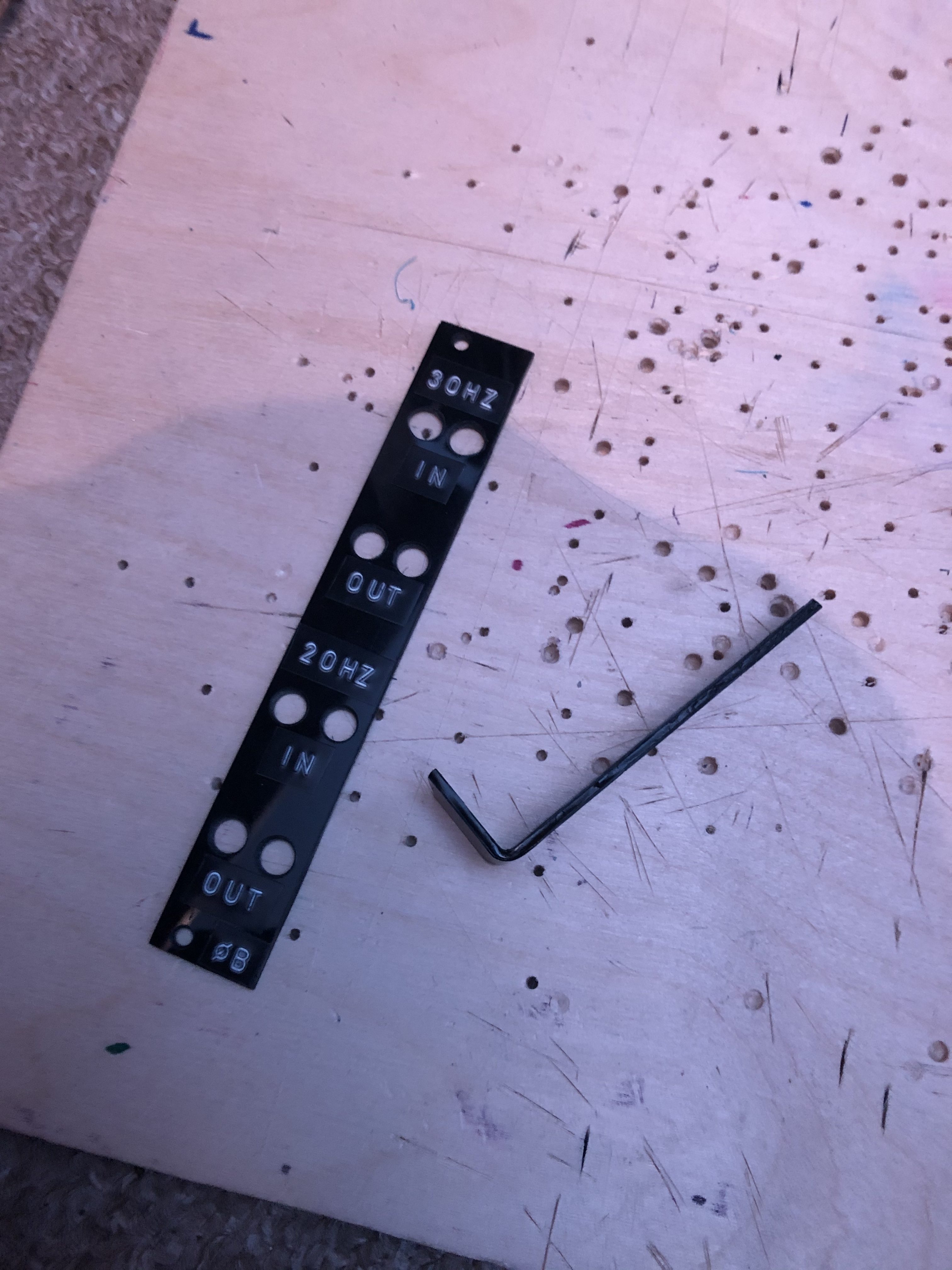
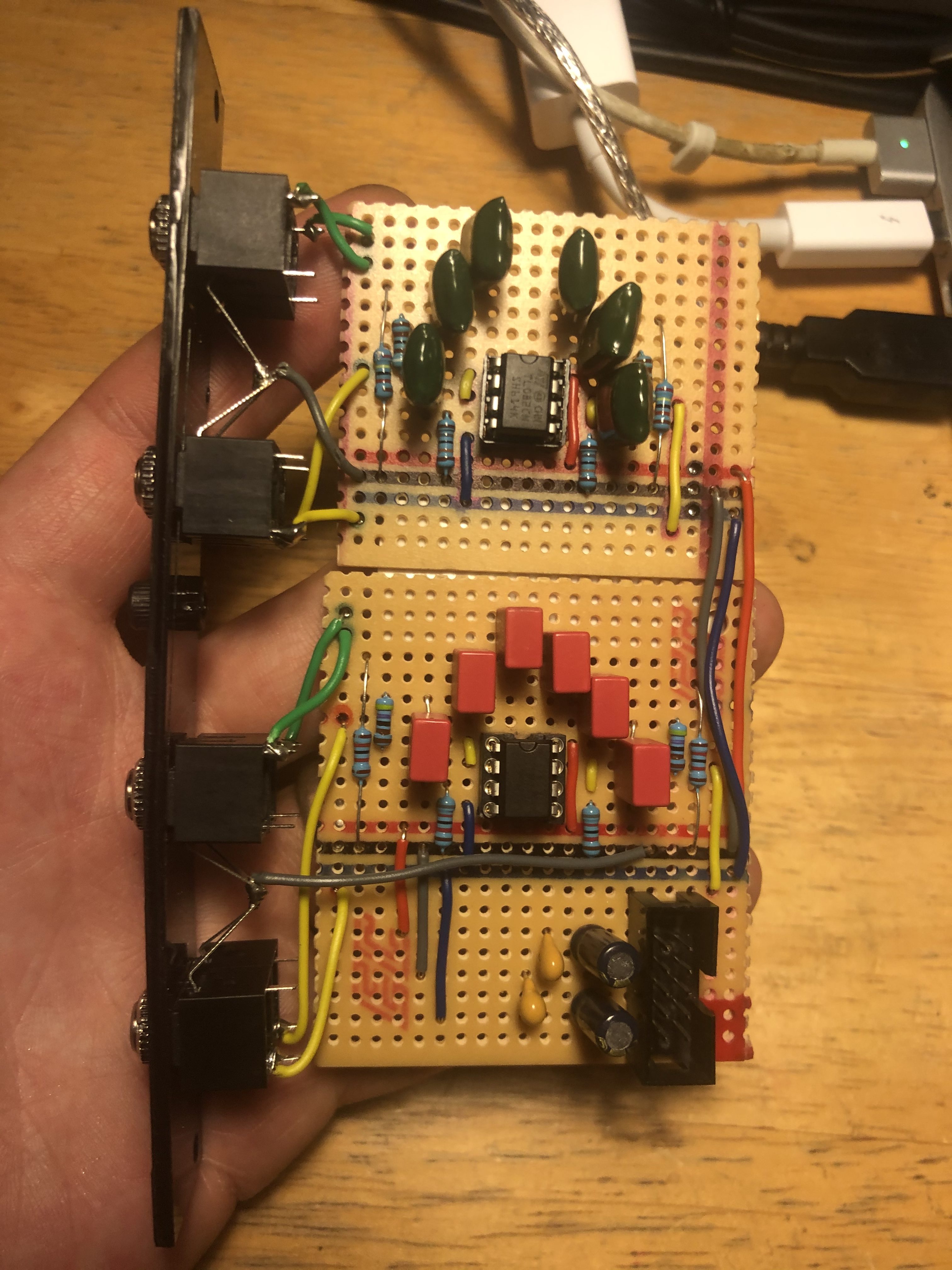
I made up a 4hp panel and added a Eurorack power header, then wired it all up. Yet another filter!
